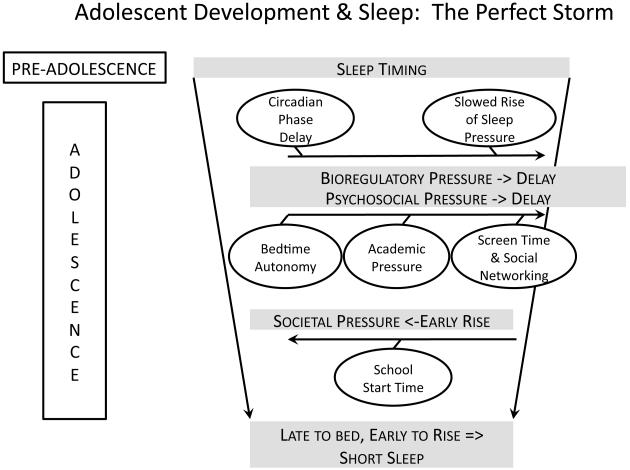Figure 1.
This figure illustrates the timing of sleep from preadolescence through adolescent development highlighting the factors that affect sleep as described in the text. Thus, sleep is relatively long and timed at an early hour for preadolescents, but maturational changes to intrinsic bioregulatory factors—the circadian phase delay arising from the circadian timing system and a slowed rise of sleep pressure steming from sleep-wake homeostasis—push for a delay of the timing of sleep. Such psychosocial factors as self-selected bedtimes, response to academic pressure, and the availability and use of technology and social networking in the evening also push for a delay in the timing of sleep. Note that the length of sleep is not affected by these processes. Societal pressures that push for an early rise time—most notably an early start to the school day—are the forces that limit amount of time available for sleep. As a consequence, adolescents sleep too little and are asked to be awake at an inappropriate circadian phase.

